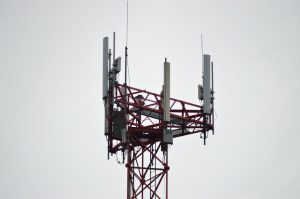
LEO Satellites: Revolutionizing Global Connectivity with Low Earth Orbit Technology
LEO satellites, or Low Earth Orbit satellites, are a type of satellite that orbits the Earth at an altitude of around 160 to 2,000 kilometers. This technology has been gaining significant attention in recent years due to its potential to provide faster and more reliable connectivity around the world. In this article, we will explore the benefits and applications of LEO satellites and how they are transforming the way we communicate and access information.
LEO satellites have several advantages over traditional geostationary satellites, which orbit the Earth at an altitude of around 36,000 kilometers. One of the main benefits of LEO satellites is their lower latency, which enables faster data transfer rates and more responsive communication. This makes them ideal for applications such as real-time video streaming, online gaming, and virtual reality.
How LEO Satellites Work
LEO satellites work by orbiting the Earth in a low altitude orbit, which allows them to cover a specific area of the planet. They are typically launched into space using a rocket and then deployed into their orbit. Once in orbit, they use their onboard propulsion system to maintain their position and adjust their trajectory as needed.
LEO satellites communicate with Earth-based stations using radio frequencies, which are transmitted and received through large antennas. The data is then routed through a network of ground stations and distributed to the intended recipients. This process happens rapidly, with some LEO satellites able to transmit data in as little as 20-30 milliseconds.
Applications of LEO Satellites
LEO satellites have a wide range of applications, including satellite internet, Earth observation, and navigation. They are also being used for scientific research, such as studying the Earth’s climate and monitoring natural disasters. Additionally, LEO satellites are being used for military and defense applications, such as communications and surveillance.
One of the most significant applications of LEO satellites is providing internet access to remote and underserved communities. Many companies, such as SpaceX and OneWeb, are launching constellations of LEO satellites to provide global internet coverage. This has the potential to bridge the digital divide and provide millions of people with access to information and opportunities.
Challenges and Limitations of LEO Satellites
While LEO satellites offer many benefits, they also have some challenges and limitations. One of the main challenges is the high cost of launching and maintaining a constellation of LEO satellites. Additionally, LEO satellites have a relatively short lifespan, typically ranging from 5-10 years, which means they need to be replaced frequently.
Another challenge is the risk of collisions with other satellites and space debris. As the number of LEO satellites increases, so does the risk of collisions, which could have significant consequences for the entire satellite industry. To mitigate this risk, many companies are working on developing technologies to track and avoid collisions, such as advanced sensors and propulsion systems.
In conclusion, LEO satellites are revolutionizing the way we communicate and access information. With their faster data transfer rates, lower latency, and global coverage, they have the potential to provide internet access to millions of people around the world. While there are challenges and limitations to overcome, the benefits of LEO satellites make them an exciting and rapidly evolving technology.




